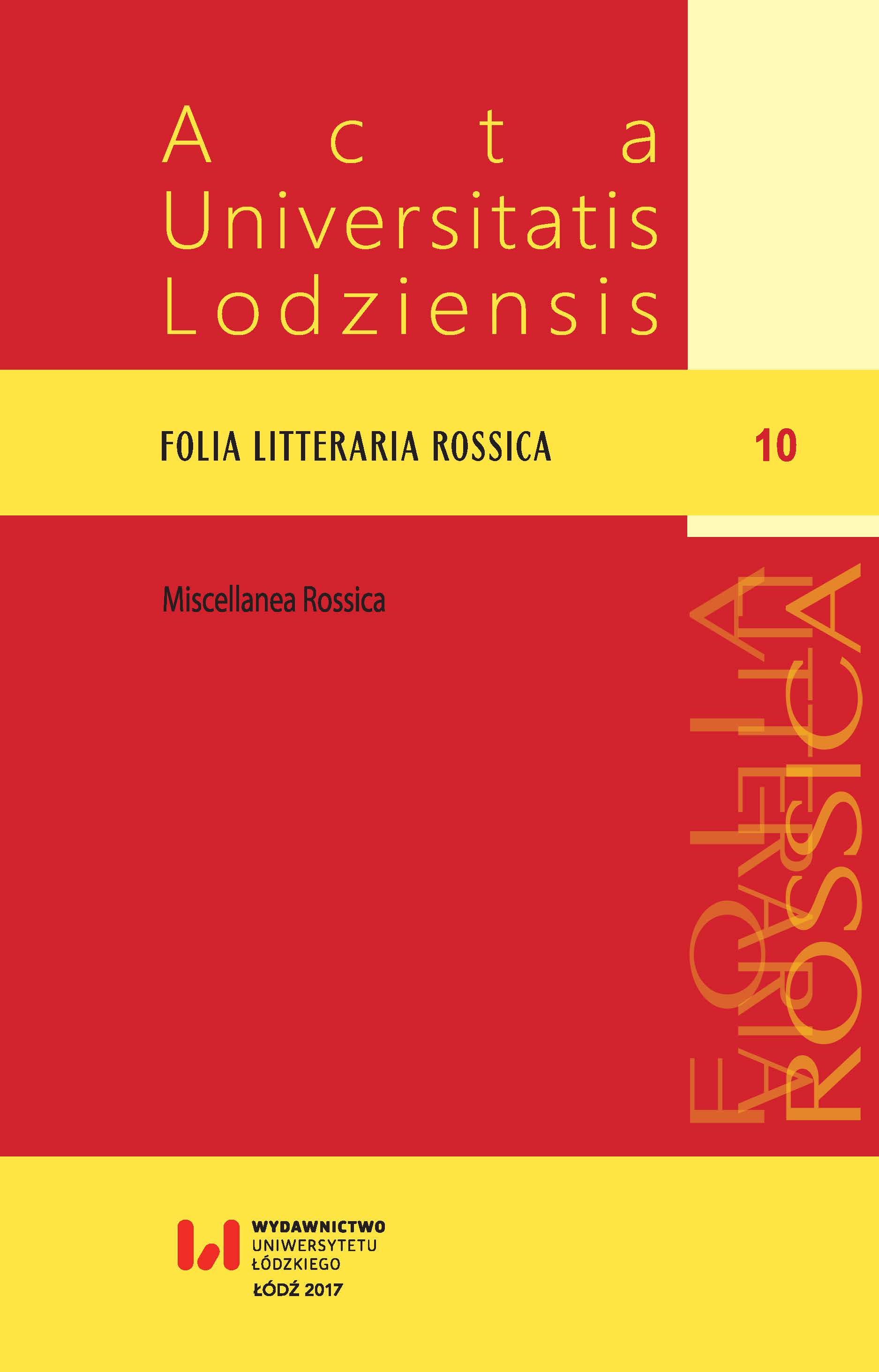The hues of children’s imagination or, on the importance of vividness in a child’s perception (Kornei Chukovsky’s poem “Tarakanishche” and its Polish translation)
DOI:
https://doi.org/10.18778/1427-9681.10.10Keywords:
child, Kornei Chukovsky, children’s poetry, imaginationAbstract
In the following article the author’s aim is to analyze how originals and translations influence the reader’s imagination. In fact, an average reader’s imaginative potential cannot be verified by any means available to a linguist. However, imagination is affected by images created by linguistic units embedded in a text. The article brings an attempt at identifying those elements of the original and translation that have the potential to activate colours and tints in a child’s imagination. Then, the author gauges whether the impressions made by the texts in this respect are comparable or different. The research material is a poem by Kornei Chukovsky, “Tarakanishche” (“Cock-the-Roach”), and its Polish translation, “Karaluszysko”. The analysis carried out leads to the conclusion that the target text contains elements that can affect the young reader’s imagination more strongly. This is the result of using exclamatory sentences, emotionally loaded vocabulary, sensory words and more detailed imagery. The greater complexity of the images in the translation creates more vivid mental pictures and potentially leads to a slightly different reception.
Downloads
References
Alimov, Vyacheslav V. Teoriya perevoda. Perevod v sfere professionalnoy kommunikatsii. Moskva: Editorial URSS, 2006: 107.
Google Scholar
Bettelheim, Bruno. Cudowne i pożyteczne. Warszawa: Państwowy Instytut Wydawniczy, 1985: 226–227.
Google Scholar
Górniewicz, Józef. Wyobraźnia i wychowanie. In: Świat człowieka, świat sztuki, ed. J. M. Śnieciński. Warszawa: Wydawnictwo Żak, 1996.
Google Scholar
Lem, Stanisław. Filozofia przypadku. In: H. Starzec, Kultura literacka – wychowanie literackie, Teksty wybrane. Warszawa: Wydawnictwa Szkolne i Pedagogiczne, 1981: 61.
Google Scholar
Manasterska-Wiącek, Edyta. Dyfuzja i paradyfuzja w przekładach literatury dla dzieci. Lublin: Wydawnictwo UMCS, 2015.
Google Scholar
Manasterska-Wiącek, Edyta. „Wzmocnienia leksykalne w tłumaczeniach poezji dziecięcej”. Rocznik Przekładoznawczy. Studia nad teorią, praktyką i dydaktyką przekładu, № 9 (2014): 144–158.
Google Scholar
Pisarska, Alicja, Tomaszkiewicz, Teresa. Współczesne tendencje przekładoznawcze. Poznań: Wydawnictwo Naukowe UAM, 1996: 197.
Google Scholar
Przetacznik-Gierowska, Maria, Makiełło-Jarża, Grażyna. Psychologia rozwojowa i wychowawcza wieku dziecięcego. Warszawa: Wydawnictwa Szkolne i Pedagogiczne, 1985:121–125, 180–181.
Google Scholar
Słownik języka polskiego, ed. M. Szymczak. Warszawa: PWN, 1989.
Google Scholar
Smykowski, Błażej. Wiek przedszkolny. Jak rozpoznać potencjał dziecka. In: Psychologiczne portrety człowieka, ed. A. I. Brzezińska. Gdańsk: Gdańskie Wydawnictwo Psychologiczne,2005: 186.
Google Scholar
Strelau, Jan, Jurkowski, Andrzej, Putkiewicz, Zygmunt. Podstawy psychologii dla nauczycieli. Warszawa: PWN, 1985: 110–111.
Google Scholar
Tp – Karaluszysko, transl. by D. Wawiłow. Warszawa: Książka i Wiedza, 1988.
Google Scholar












